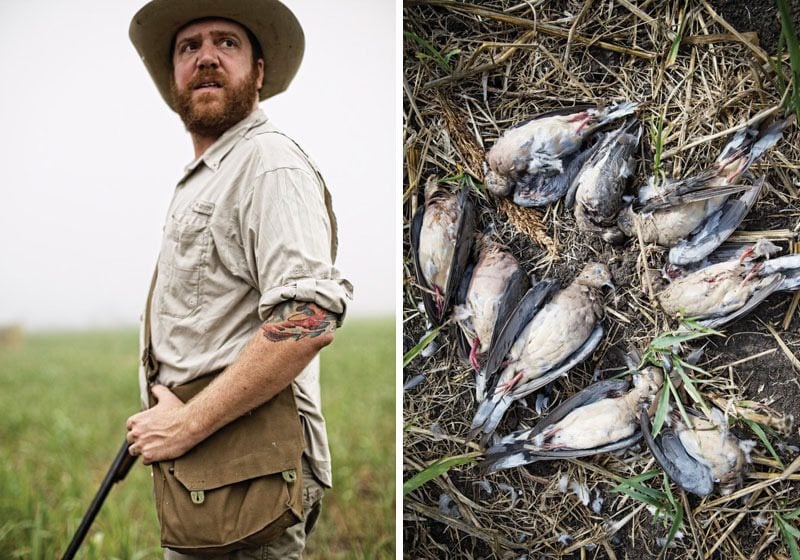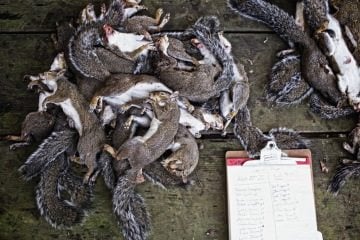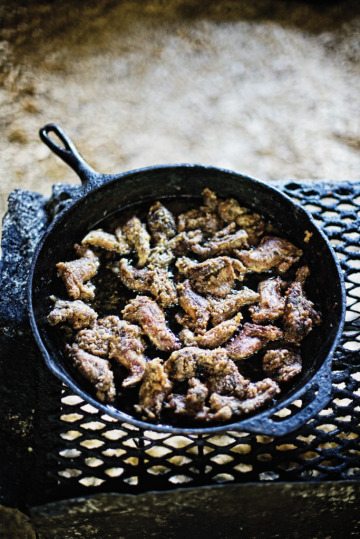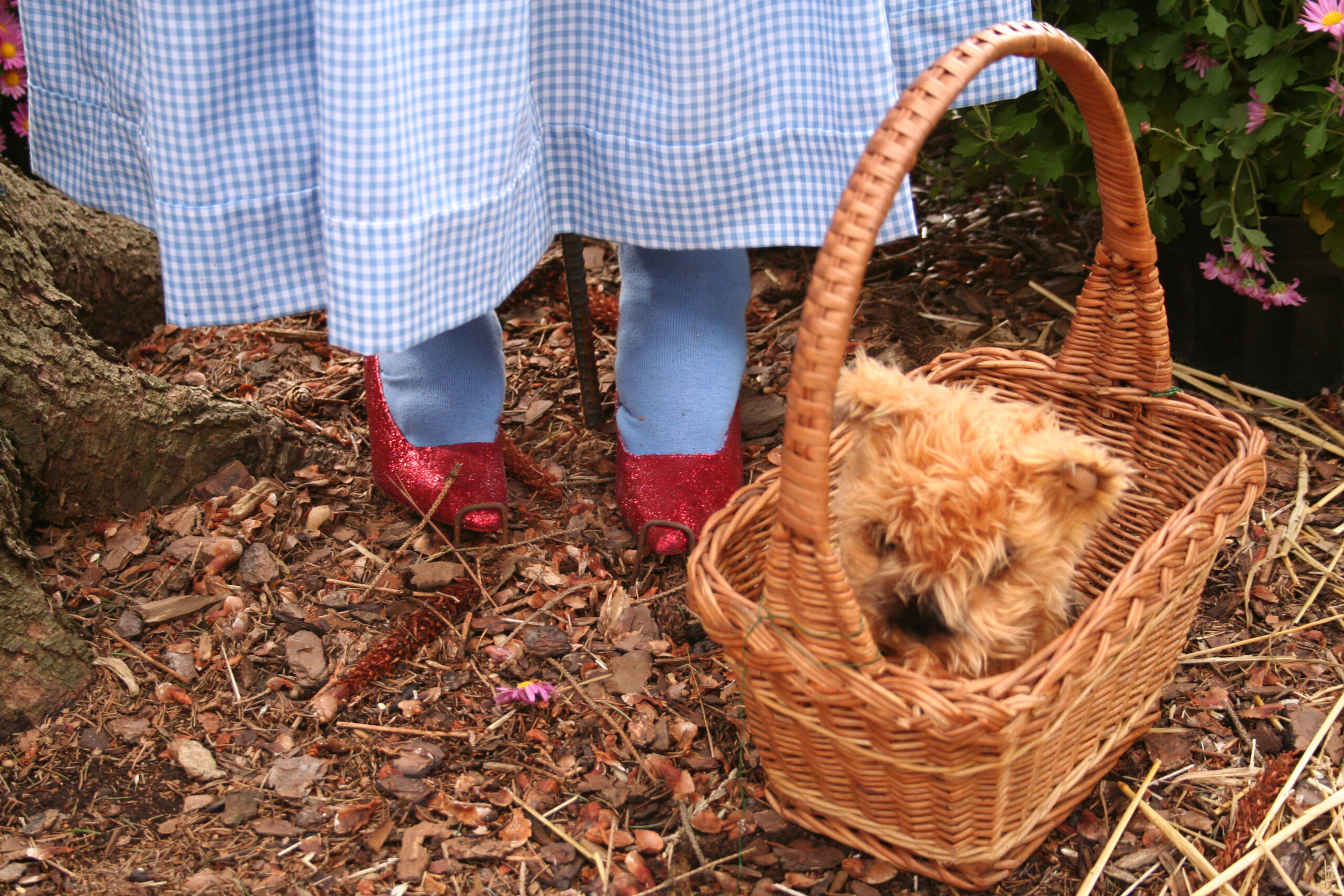
The Changing Culture of Killing for Food
A new generation of hunters is taking locally sourced eating to the next level.

A version of this story ran in the November 2014 issue.
Above: Jesse Griffiths is a hunter and author of the cookbook "Afield: A Chef’s Guide to Preparing and Cooking Wild Game and Fish."
Jesse Griffiths is in the grocery store—the co-op grocer, Wheatsville, in Austin—when he gets recognized among the Dr. Bronner’s soap and sustainable tofu and free-range paper towels. Recognizing Griffiths is pretty easy to do—he’s a big young white guy with a beard, and lots of folks know him from Dai Due, a farmers market stand turned full-service restaurant and butcher shop on Austin’s east side.
“They’re 25 to 35, they like music, food, art. They’re socially minded, whatever that might mean. They’re interested in hunting, and maybe they weren’t five years ago, but they are now.”
But this lady who spots him isn’t really a customer, per se.
“Are you Jesse?” she asks. He says he is.
“I have a fig tree,” she says.
He knows where this is going. She’s going to ask about squirrels.
“You killed a squirrel,” he ventures. “Because he was eating all your figs.”
He’s right.
Griffiths gets a lot of this kind of thing now that he’s published a cookbook—though that doesn’t begin, really, to fully describe Afield: A Chef’s Guide to Preparing and Cooking Wild Game and Fish, which is more a guidebook, or even a kind of map, for folks looking to move beyond the meat counter into hunting, butchering and preparing their own wild game.
And this lady, well, she killed a squirrel in her yard and she opened up Afield and there it was: how to get a squirrel from tree to plate.
Afield is a $40 brick of a book, beautifully shot by Austin photographer Jody Horton. Even if you never pick up a shotgun, Afield is a hell of a thing to have on your bookshelf next to The Joy Of Cooking and Modernist Cuisine.
Griffiths says more and more people do seem to be picking up shotguns and rifles, and they’re not necessarily beer-swilling Bubbas who hole up in $1,300 camouflaged blinds and draw game into range with deer corn. These are people taking a step beyond CSA delivery and backyard chicken coops, following the path of locally sourced eating to the next level.
That path originates at a convergence of a lot of obnoxious gastronomical buzzwords floating around menus and recipe blogs these days (locavore, sustainable, seasonal) and a Michael Pollan-esque, Fast Food Nation-inspired distrust of large-scale factory farming and ranching.
“That’s a demographic,” says Griffiths. “They’re 25 to 35, they like music, food, art. They’re socially minded, whatever that might mean. They’re interested in hunting, and maybe they weren’t five years ago, but they are now.”
Jill Carroll is a novelist and former professor of the philosophy of religion at Rice University who lives in a Houston suburb—gated and all, she admits somewhat sheepishly—with her partner, Nishta, and their toddler son, Shiva, “Shiv” for short.
Carroll grew up hunting in Louisiana, not for sport but for sustenance. When she left her family’s land—her people started out as sharecroppers—for Oral Roberts University and later Houston, she drifted away not only from the hunting lifestyle she’d known as a child, but from her family’s evangelical faith. “I had other priorities,” she says.
But now Carroll has returned to hunting to help provide for her family in a way that she sees as distinctive from the “shooters” she’s seen wandering public land wearing bandoliers “like Rambo.”
Of course, a great many of Texas’ hunters do hunt primarily for meat—as do Carroll and the guys she shares her lease with.

Carroll hunts in Wallis, just east of Houston, where we’re waiting for opening weekend’s last doves to give us a shot at dinner. She remembers her parents building little charcoal fires to keep her warm during winter hunting trips to Arkansas. Once she got a little older, she’d trail behind her mom, picking up the squirrels her mother shot and tucking them in a game bag.
When Carroll’s two shotguns both misfire—bad shells, it turns out, to Carroll’s extreme relief—she thinks about her mom’s shotgun: “She could fill a meat locker with that thing.”
Carroll distinguishes between shooters and hunters. “Shooters care about killing more than anything else,” she says. “They’re not concerned with ethical practices.”
Carroll is a thoughtful shot, aiming but not firing if she doesn’t think she can give a bird a good death. We’re not having much luck this particular Sunday evening. It’s like the doves are taking her decoys as warning rather than welcome sign. Carroll, a self-described introvert, says she enjoys the opportunity to convene with nature even if she comes home empty-handed.
“Things eat other things,” Carroll says. “That’s the economy of the natural world.”
Jesse Griffiths calls them “hippies that hunt,” and thinks of them as “the best of both worlds.” If he can teach somebody how to kill a wild hog, he says, “they’re in turn going to go and be more cognizant of their food choices in the grocery stores.”
For all the hipness of “seasonal” eating and the like, in the grand scheme of human endeavor, the real trend has been toward not eating seasonally, not buying locally sourced meats and vegetables. It’s only in the last 70 years or so that refrigeration and highway trucking has enabled us to eat tomatoes in January. Or make, Griffiths pointed out, “authentic” gumbo with the necessary trinity of bell peppers, celery and onion.
“If you’re going to tell me the only way to make authentic gumbo is to put the trinity in there, I think you’re full of shit,” Griffiths says. “Because the trinity is never in season together.”
Griffiths, a chef and butcher, started hunting only about four years ago, and he concedes that the project represented by Afield is a work in progress. It’s about learning and sharing knowledge, he says, and building a new kind of community of progressive-minded people who work together to do a little bit better for their environment.
Case in point: Late this summer, Jill Carroll took her dad out to Blue Heron Farm, just north of Houston, to teach Lisa and Christian Seger how to process their first goat. Carroll’s dad told them he’d gotten “soft” in his old age, so he’d asked the Segers to kill the goat beforehand.
Carroll and Inge and Read and Griffiths and others like them are happy to forge a new kind of Texas hunter identity, one that builds on the lessons of their childhoods and incorporates a more conscious sensibility. “We’re taking it away from Ted Nugent.”
Keep in mind that the Segers are mostly vegetarians, pasture farmers who’ve spent the last seven years or so making artisanal cheeses after moving to the country from central Houston. Christian Seger is an audio producer who’s toured with the Butthole Surfers and Miranda Lambert. Their barn cat is named Motorhead.
The Segers teeter on the edge of Griffith’s hippie-hunter demographic, growing their own food and keeping pigs on their organic spread in Waller, but stopping short of hunting.
They slaughtered that goat, though.
“It was crazypants,” Lisa Seger tells me, wide-eyed, when I stop by Blue Heron to meet her herd—a pack of Nubians with names like Lucinda and Bishop Don Magic Juan. They’re almost cat-like in the way they’ll nudge up to visitors for ear scratches. Seger says she had been worried that taking the animal’s life would send her into some sort of emotional spiral.
But it didn’t, and she proudly opens a freezer crammed full of goat meat destined for the crockpot—though she admits that she doesn’t know much about cooking meat.
Jill Carroll, on the other hand, specializes in finding ways to prepare the meat she brings home to Nishta—who writes a popular Houston food blog—and Shiv. She smokes duck and she makes jerky, but her voice gets dreamy when she thinks about preparing the first doves of the season.
“It is amazing to take that first bite,” she says. “They were flying at 4 p.m., and at 7 p.m. they’re on my grill, and I haven’t had any doves in six or eight months.”
But hunting isn’t cheap—Carroll’s 1,100-acre lease costs about $5,000 per hunting season, which she splits with nine other hunters—and Carroll says things can quickly take a turn for the bourgeois if you’re not careful.
“One big concern that I hear is that this is basically for middle-class to upper-middle-class white people,” she says. “It’s clear that it does take a little bit more money to hunt, but fishing does not.”

Jesse Griffiths told me he came to hunting via a lifelong obsession with fishing. Same goes for Jordan Inge, a Dallas-based photographer, woodworker and art handler I meet through my oldest buddy, Trenton Read. Inge pulls up on his scooter to the Dallas bar where the three of us are set to talk wild game over craft beers, and he admits that money is a big barrier for him when it comes to doing anything more than fishing.
“I don’t really have access to hunting,” Inge says, though he loves to do it when he gets the chance. Inge grew up on South Padre Island, fishing in the Gulf of Mexico and eating the venison his grandfather brought home because they were too broke to eat anything else. Which is why he prefers bird hunting and fishing to deer hunting: “I don’t want a freezer full of meat that reminds me of my poor childhood.”
Read is the kind of guy who revels mostly in the sport and the gear. He messes around with crossbows handed down by his dad and has been shooting squirrels in his yard with a pellet gun, amassing a freezer-full for stew later this fall.
Neither Inge nor Read have the resources to hunt trophy bucks—a whitetail shoulder mount starts around $500—and both guys prefer the taste of doe, the population of which benefits from culling anyway. So Read and Inge harvest doe when they have the opportunity, and they get as much as they can out of every animal.
Jill Carroll says that one of the reasons she stopped hunting for so many years in college and after was that she just plain couldn’t afford to do it. Public land is scarce in Texas, and as a woman, she wasn’t wild about the prospect of setting out into the backcounty alone.
Now she can afford her own lease, and supplements the gardening and foraging she does at home in the suburbs with wild-caught game.
“It’s real easy to get self-righteous,” she says. “It’s so easily a bourgeois thing.”
But Carroll and Inge and Read and Griffiths and others like them are happy to forge a new kind of Texas hunter identity, one that builds on the lessons of their childhoods and incorporates a more conscious sensibility.
“We’re taking it away from Ted Nugent,” Griffiths says.
Out on Jill Carroll’s lease, the philosopher-writer echoes that sentiment with shotgun in hand: “My point is to hunt and to kill what I shoot and to eat what I shoot,” she says.
But on this evening, we’re having no luck. The sun is setting and we’re going home empty-handed. Carroll is disappointed, but not unduly so:
“That’s why they call it hunting and not grocery shopping.”


